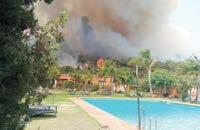
How a hard-working team of workers saved their famous hotel from certain destruction after a wildfire came within four metres of its walls



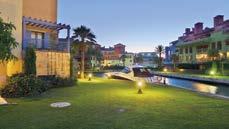


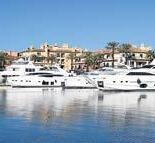


How a hard-working team of workers saved their famous hotel from certain destruction after a wildfire came within four metres of its walls







DROWNINGS in Spain have hit their highest level in a decade, with 303 deaths in the first seven months of 2025 – the most since records began in 2015 – and older men on beaches making up the biggest share of victims.
Figures from the Spanish Lifesaving Federation show 92 people died in July alone, making it the fourth deadliest July on record.
The May–July period saw 209 fatalities, surpassing the worst previous quarters in 2017 (194) and 2024 (187).
Andalucia leads the death toll this year with 52 drownings, followed by the Canary Islands and Valencia (39 each), Catalunya (36) and Galicia (34). Only Extremadura and Ceuta have reported no deaths so far in 2025.
The typical victim is a Spanish man over 45, often over 65, with many deaths linked to sudden health problems in the water such as heart attacks or dizzy spells. But younger swimmers are also dying in greater numbers – 66 victims aged 18 to 44 so far this year, making up almost 22% of the total.
Children remain a major concern. Nine died in July and 11 in June, bringing the annual total to 23 –many unsupervised in home or inflatable pools. Lifesaving expert Professor Roberto Barcala warns: “These deaths are quick and silent – around 90 seconds.There’s no shouting or splashing.”
Beaches are the deadliest setting, with 50 fatalities in July, followed by 13 in pools, 10 in rivers and 19 in other inland waters. The RFESS warns of the high number of deaths in unguarded spots: in 45 cases there were no lifeguards present, and in 33 there was no patrol service at all due to the nature of the location.
“This is a catastrophic summer,” says RFESS president Samuel Gomez Mayor. “We need immediate action – extending lifeguard coverage beyond the high season and protecting inland natural environments. Prevention must start young, with school-based training in water safety.” Campaigners are calling for national safety drives, pool fencing laws, and consistent professional training for lifeguards. Safety chiefs urge swimmers to stay calm in rip currents, never swim alone, and appoint an adult ‘water guardian’to watch children at all times.
As veteran safety campaigner Sebastian Quintana puts it: “The best lifejacket is information.”

AT least two people have been killed in wildfires that are devastating large tracts of the country.
Arsonists are likely behind at least three of the eight major blazes that have so far razed hundreds of thousands of hectares this month, including a UNESCO world heritage zone.
One person died near Madrid trying to save horses while a 35-year-old volunteer firefighter became trapped while cutting firebreaks near Nogarejas.
Police are now probing the fires that have seen thousands of people evacuated from the suburbs of Madrid to the protected coastline of Cadiz.
The second fire in a week between Tarifa and Zahara de los Atunes was ‘definitely’ started deliberately, according to authorities.
The blaze that has seen 2,000 people evacuated as it ripped through over 300 hectares of protected woodland in the Parque Natural del Estrecho, is no doubt arson.
Fire investigators discovered it had been ignited in a hidden spot behind a rock, a location chosen to make detection difficult.
Andalucia minister Antonio Sanz branded the act ‘malicious’ and warned those responsible will face the full weight of the law.
Drones have now been put up all
Arson, death and mass evacuations as wildfires rage across the nation – 98,784 hectares destroyed and counting along the stunning Costa de la Luz coastline in an unprecedented effort to catch the culprits before any more harm is done.
The horror deepened 600km away in Avila, where a firefighter has extraordinarily confessed to sparking a massive blaze ‘to give himself more work’. That inferno destroyed 2,200 hectares, forced two towns into total lockdown and put hundreds at risk, before the man who lit it joined efforts to extinguish it.
In Leon, the historic Roman gold mines of the UNESCO-protected Las Medulas area were engulfed in another suspected arson attack.
The fire forced the evacuation of 1,400 people as fierce heat and winds created ‘fire whirls’ that even seasoned firefighters struggled to contain.
Meanwhile, entire towns in Ourense province were emptied as flames devoured more than 7,000 hectares of forest, while other blazes continue to rage in Zamora, Castilla-La Mancha and Madrid’s outskirts.
More than 8,000 people have spent nights in shelters, unable to
return home.
The scale of the destruction is staggering.
So far this year, 199 forest fires have burned 98,784 hectares - more than double the 42,615 hectares lost during the same period last year, when 219 blazes were recorded.
This year’s figure is already higher than the totals for 2023 and 2024.
The worst recent year came in 2022, when a catastrophic 306,000 hect-
FRIGHTENING: Fire
ares burned.
service
Prime Minister Pedro Sanchez has called the situation ‘serious’ and appealed for extreme caution, as forecasters warn that high winds and blistering temperatures will make the coming days even more dangerous.
Officials say arsonists could face lengthy prison terms and multi-million-euro compensation claims for the environmental destruction and the massive emergency response costs.
The crisis is part of a wider European firestorm, with neighbouring Portugal enduring its worst wildfire season since 2022 and southern France hit by its largest blaze since World War II.

CONSTRUCTION has started on a three-storey 123-space car park in the Port of Javea which will include a top-floor viewpoint of the bay.
MURCIA businessman Tomas Olivo has taken over the Infinity Shopping Centre project in Valencia’s Turianova area for €60mSpain’s largest planned retail development
TORREVIEJA has secured a €32m low-interest bank loan to pay for projects like improving port areas plus revamping the Eras del Sal and the Ice Factory.
FRIDAY August 15 is a national bank holiday in Spain to commemorate the Assumption of the Virgin Mary, meaning some businesses and all public offices will be closed.
IT was a classic rearguard action by the hard-working staff at a leading hotel that saved it from almost certain destruction.
As flames swept across a large swathe of virgin Tarifa countryside, dozens of employees at Punta Sur worked round the clock to keep the blaze at bay - as it lapped ‘just four metres’ from its perimeter.
“Without their very hard work, the hotel would not be in the same condition today,” manager Greetje Custers told the Olive Press.
With roads closed and no way for guests and staff to get in or out, Custers had to activate all emergency protocols.
As helicopters buzzed over-
EXCLUSIVE: Expat hotel boss
tells of ‘amazing’ staff who saved luxury hotel and 100 guests as scary wildfire came ‘just 4 metres’ from the bedrooms
By Dilip Kuner
head, and the wildfire took hold around 5pm yesterday, she had to gather the 100-plus guests from 40 rooms at the three-star hotel.
“We asked our guests to leave their rooms just in case, but we didn’t need to evacuate, which would have been im-

possible anyway as the roads were closed,” continued the Dutch boss, who also manages the nearby Hurricane Hotel.
As fire engines battled the inferno on the ground, the hotel staff worked with relentless determination, dampening down the hotel grounds to help keep the blaze away.
“The staff watered the perimeter and somehow managed to stop the fire from reaching
A MAJOR fire broke out at Cordoba’s UNESCO-listed mosque-cathedral, sparking fears of a Notre Dame-style disaster.
Firefighters quickly contained Friday’s blaze, which began after a cleaning machine caught fire. The roof of one chapel collapsed and two others were damaged, but the monument was saved.
Thirty-five firefighters and six engines battled the flames. The Mezquita reopened to tourists on Saturday, with only the damaged area closed. The site, visited by over two million in 2024, is a jewel of Christian-Moorish architecture.

the hotel - although at one point the flames were just four metres from some of our bedrooms.
“Everything above the Punta Sur is gone - burned. The fire thankfully didn’t cross the main road, but it was so close.
“I can’t stress enough how hard the staff worked to protect our guests and our property.
“Most of them, like many of the guests, were up for much of the night. Nobody could leave. It’s fair to say nobody slept well.”
Custers explained how it was lucky that the famously strong Tarifa winds dropped by nightfall.
“If a ‘nuclear Levante’ had been blowing things might have been different,” she insisted.
The fire, which began at the neighbouring Torre de la Peña 1 campsite, was still burning a day later, with 1,550 people and over 5,000 cars evacuated from the area.
This included guests at hotels, including 100% Fun, La
FLAMES APPROACH: They reached just four metres from the Punta
hotel
Cabana and WAWA, plus two campsites. Although the official cause remains under investigation, it's believed to have started in a caravan on the campsite. The fire was only finally extinguished after five days on Sunday, having destroyed 283 hectares, much of it in the two natural parks of El Estrecho and los Alcornocales.
But just hours later a new fire broke out in nearby Bolonia. The fire continues to threaten the popular tuna fishing town of Zahara de los Atunes. Residents from the northern section of Atlanterra urbanisation, including guests at the Melia Zahara Hotel and Cortijo Hotel, have been evacuated. Preventive evacuations have also been ordered for Montaña de Los Alemanes developments and those at the foot of Sierra de la Plata. In total, 2,000 people have been evacuated. Several caravans at campsites near Torre de la Peña have already been destroyed by the flames.


LAST Sunday marked five years since Spain’s former king Juan Carlos I fled to Abu Dhabi amid a financial scandal.
The 87-year-old emeritus monarch left in August 2020 after telling his son, King Felipe VI, he had made a ‘thoughtful decision’ to live abroad.
Months earlier, Felipe had renounced any inheritance from his father and cut Juan Carlos’s public allowance following reports of a €65m Saudi-linked offshore
payment. Though criminal investigations have since been closed, Juan Carlos shows no sign of returning permanently. He keeps a low profile, making headlines only for legal battles with ex-partner Corinna Larsen and ex-Cantabrian president Miguel Angel Revilla. He regularly visits Galicia for sailing regattas and plans to publish his memoirs, Reconciliacion, later this year.
While Villafranco, near Malaga, has finally shed former dictator Franco’s name, half a dozen stubborn towns are clinging on to his legacy
WHILE one tiny Andalucian village finally has just ditched dictator Franco’s name, six stubborn towns across Spain are still proudly clinging to their fascist-era titles - openly flouting the country’s 2022 Democratic Memory Law with zero consequences. Villafranco del Guadalhorce, near Coin, has just changed its name to Villa del Guadalhorce.

But places like Llanos del Caudillo, Alberche del Caudillo, and
By Adam Husicka
San Leonardo de Yague are stuck in the past, refusing to budge. These aren’t subtle nods. Llanos and Alberche both slap on ‘Caudillo’- Franco’s nickname meaning ‘leader’ - while San Leonardo de Yague honours a brutal general known for his ruthless Civil War tactics.
Other towns salute fascist figures like Emilio Mola and Onesimo Redondo, key players in Franco’s bloody regime.
Even though democracy returned to Spain after Franco’s death in 1975, these names have lingered on - especially in conservative rural areas where the past refuses to stay buried.
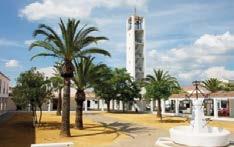
The 2022 legislation was supposed to wipe out public tributes to Franco - for example street names, towns and monuments - with fines up to €10,000 for rule-breakers. But no fines have been handed out, no official blacklist released, and precious little action taken. Some local councils say renaming isn’t a priority, fearing political backlash or stirring up old conflicts.
Take, Alberche del Caudillo. It started the renaming process but hit pause waiting on a national list of banned names that still hasn’t appeared.
Residents are divided too. Some see these names as history that can’t be erased. Others are fed up that fascist tributes still have a place in modern Spain, according to regional reports.
Spain’s political scandals make Westminster’s sleaze look like small change
WHAT is it with Spanish politicians?
It’s as if corruption and dodgy deals are a kind of parliamentary sport - and getting into power has less to do with running the country than with lining the pockets of your increasingly pricey suits. Or so it seems when you hear the latest allegations flying around.
Last week, opposition MPs were calling socialist PM Pedro Sanchez and his wife, Begoña, a pair of pimps, living off the immoral earnings of a chain of brothels and gay saunas once owned by the First Lady’s late father. A great yarn that had everyone sniggering - except, presumably, poor old Pedro and the missus.
I thought that was a belter unlikely to be topped anytime soon… until I delved into Spain’s back catalogue of scandals. There was the ERE swindle from the early 2000s, when senior officials trousered €680 million meant for redundant workers. And the Gürtel bribery scandal, with so much cash changing hands in brown envelopes that even Terry Venables would have blu shed.
But nothing quite prepares you for the latest alleged heist - billions si-

BIRTHDAY PIC:
ZORRO star and Spanish national treasure Antonio Banderas marked his milestone 65th birthday this week.
The Malaga-born actor has earned praise for not just his legendary film career but for his role as a devoted family man. Banderas, one of Hollywood’s most popular faces, has been celebrated for his diverse roles in both Spanish and English language films.
Stepdaughter, Fifty Shades of Grey star, Dakota Johnson, paid tribute saying Banderas ‘loved her mother (his ex, Melanie Griffith) and siblings so loudly it changed their lives forever’.
SPANISH footballer Alberto Lejarraga has married his long-term partner, actor and musician Ruben Fernandez – becoming the first openly gay active footballer in Spain to wed a same-sex partner.


phoned from the public purse.
‘Influence peddling’ charges proven against former finance minister Cristóbal Montoro and 27 high-ranking officials are so vast they make ex-UK Tory MP Neil Hamilton’s paid parliamentary questions look like a parking ticket. In Britain, ex-ministers usually wait until retirement to cash in with cushy ‘consulting’ gigs. But Montoro and co allegedly rewrote tax laws while in office to save gas companies billions. In 2012 alone, the scam is said to have robbed Spain of €2.2 billion. You’ve got to hand it to them - if
you’re going to risk a stretch in el calabozo, you might as well make the payoff worth it.
The big question is: with so many people and industries involved - construction, renewables, you name ithow did they get away with it for so long? Surely this was an open secret in certain circles.
So… who else was in on it? Who’s still lurking in the shadows, praying they don’t get dragged in? And just how far will the powerful go to stop the truth coming out?
Think the ‘suicide’ of Jeffrey Epstein. I’m just saying…
The 30-year-old Marbella FC goalkeeper tied the knot last month at Hacienda Las Fuentes in Fuengirola, calling it ‘one of the best moments of our lives’.
The ushers wore bow ties decorated with footballer photos in a nod to his career. Lejarraga came out in 2023, sharing a kiss with Fernandez to celebrate his team’s promotion. The couple are now honeymooning in Japan. Openly gay male players remain rare in football –just six worldwide – with homophobia still rife in the sport.



THE national government has given Jumilla Town Council a month to rescind its ban on Muslims holding prayer festivals in municipal facilities or else it will go to court.
Two Islamic celebrations have used council sports centres and grounds for years - without any issues - to cel-
SPAIN’S population reached a record high of 49,315,949 on July 1, 2025, according to provisional data from the National Statistics Institute (INE). This marks an increase of 119,811 residents in the second quarter of the year, and a yearly rise of over 500,000 people. The growth is mainly due to the arrival of immigrants, as the number of people born in Spain continued to decline.
In the second quarter alone, 137,931 foreign-born individuals became residents, while the Spanish-born population dropped by 18,120. Not all foreign-born arrivals are foreign nationals - many already hold Spanish citizenship.
The number of foreign nationals increased by 95,277, surpassing 7 million across the country. The top nationalities among new immigrants were Colombian (36,100 arrivals), Moroccan (25,000), and Venezuelan (21,600).
A BRITISH teenager flew from Menorca to Italy while his parents were waiting for their flight home to London-Stansted.
The 15-year-old boy, who is on the autism spectrum, ended up at a different gate and boarding lane.
He then took his place on the Easyjet flight to Milan Malpensa airport as his parents reported him missing to the police.
The cabin crew were unaware of anything untoward until the captain was radioed details from Menorca.
The Policia Nacional said it was Easyjet’s responsibility to return the teenager to Menorca or to put him on a flight to Stansted.
In the end, the mother boarded a Milan flight to bring her son back to Menorca.
ebrate the end of Ramadan and the Feast of the Lamb.
The ban was approved last week by the PP-run authority, which needs the vote of the single far-right Vox councillor to get legislation passed. The government said the measure ‘violates the constitutional principles of religious freedom, equality and administrative neutrality, and constitutes a clear misuse of power’.
The Minister for Territorial Policy, Angel Victor Torres, said: “There can
be no half-measures when it comes to intolerance.” “The PP and Vox cannot decide who has freedom of worship and who does not. It is a constitutional right,” he added.
The Government Delegate to the Murcia region, Mariola Guevara, added if Jumilla does not reverse course, then the State Attorney’s Office will get involved and the matter would go to court. Legal experts are already working on
the issue and if there is no response from mayor Severa Gonzalez by September 11, then ‘steps will be taken’.
Gonzalez said the council was not singling out any one group and that her administration wanted to ‘promote cultural campaigns that defend our identity’. Implementation has been suspended anyway as a report is being prepared for Jumilla City Council on the measure’s legality.

The authority says it will reverse its decision if its advisors find it to be illegal. It is the second race-related controversy in Murcia this summer, following on from the Torre Pacheco riots.
Alarming 730 ‘luxury’ homes and 1,360 hotel beds planned for unspoilt beach despite 157 objections and warnings of environmental disaster
ONE of the last truly unspoilt stretches of Spain’s southern coastline could be buried under concrete after a town council brazenly ignored 157 detailed objections.
Despite years of campaigning, green groups were left stunned when councillors in Tarifa approved plans to develop one of its virgin beaches.
The mega-resort beside Los Lances beach will see a quiet, low-key area built on with 730 homes and a string of hotels totalling 1,360 beds.
The protected area, roughly the size of 80 football pitches, is just metres from the dunes and wetlands of the Parque Natural del Estrecho.
It is also just a few hundred metres from the inland Parque Natural del Alconocales, and part of the EU’s Natura 2000 network.
By Dilip Kuner
green groups that put in detailed objections to the scheme, in particular citing wildlife and issues over water.
Allied with local group Agaden, they claim the scheme will be devastating for ‘endangered birds, fragile dunes, and wetlands that act as flood protection’.
On top of that, Tarifa is already struggling with water shortages and creaking public services, especially during the peak summer months.
“There just isn’t enough to go around,” Gil continued.

But this hasn’t stopped Tarifa town hall from dusting off a plan from the 1990s to bring in much needed revenue from building licences.
“This isn’t housing for families for Tarifa - it’s more second homes for the wealthy, more hotels for mass tourism, and more stress on a town that’s already at breaking point,” spokesman for Ecologistas en Accion Javier Gil told the Olive Press.
“People come to Tarifa to see untouched beaches - not to spend their holidays staring at concrete blocks,” he added. His group was just one of many
“There’s not enough housing for the people who live here. There’s not enough water. There’s barely enough space to breathe in August. And now they want to build a mini city on a nature reserve?
“This is being driven by pure speculation, as the local people already can’t even afford the homes here. Meanwhile the council is pushing through projects for rich outsiders.”
He added the public consultation process was ‘a joke’, after all 157 objections - including expert reports warning about flooding, infrastructure and legal violations - were ignored.
“They’re not listening,” Gil said.
“They’re turning Tarifa into another Costa del Sol, and no one voted for that.
“The people who love this place, who live here year-round
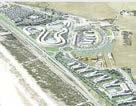

- we’re being shut out.”
Legal action is being prepared, and protests are expected over the summer.
“We’re not going to take this lying down,” added Gil. “If they think we’ll just let them destroy this coast without a fight, they’ve got another thing coming.”
The Los Lances scheme has been kicking around since the early 2000s and is based on a town plan from 1990 - before any proper environmental laws were in place.
But with big foreign investors reportedly circling, the council has brought it back to life.
Olive Press Property Insider Adam Neale, who knows the area well, understands much of the money is coming from a Russian group, linked to Estepona.
“Either way, I think this is a huge mistake for Tarifa and particularly from a public image perspective,” he said. Campaigners also insist the move is part of a much bigger
A FORMER head of the Policia Nacional’s narcotics unit in Mallorca has been arrested as part of a money laundering probe involving drug trafficking cash. Inspector Faustino Nogales was detained in Palma in an operation carried out this week by the Guardia Civil and Policia Nacional. Nogales had transferred to another unit around a year ago. Multiple raids took place in several parts of Palma on Monday with approximately 20 people arrested.
One visit was to a law firm on Paseo Mallorca where several boxes of documents were removed and lawyer Ignacio Gon-
zalo Marquez arrested. Simultaneous searches also took place in Inca and Binissalem. Details about the operation- directed by the Court of Instruction number 7 of Palma - are restricted after it declared a secrecy order. Another detainee was Stefan Milojevic, leader of the United Tribuns gang.
Milojevic was convicted in 2020 for drug trafficking after his crew posed as police officers to steal narcotics. His lawyer five years ago

was Ignacio Gonzalo Maquez. Members of Milojevic’s family are also reportedly under investigation. Authorities are trying to track down money laundered via numerous companies that used front men.
A significant number of seized electronic devices are being analysed to work out the money trail and what kind of sums were involved.
land grab.
The Olive Press previously revealed that six major coastal sites had been earmarked for development by the town hall - even including emblematic Valdevaqueros beach.
Collectively this would mean a 450% expansion of Tarifa’s urban footprint.
One of the longest-established hotel owners in the area, Peter Whaley, at the Hurricane told the Olive Press: “It’s crazy. We should be doing everything we can to protect this stretch of coast. It’s one of the last places that hasn’t been wrecked by development.”
The plan is now in the hands of the Junta, which will decide whether to give it the green light after an environmental review.
But campaigners fear the decision is already a done deal, especially with the PP party running both the council and the regional government.
Opinion Page 6
THE son of a former Valencian Finance Minister died in a light aircraft crash on Saturday. Two men lost their lives at around 11.25am, shortly after the plane left Requena aerodrome.
The craft ended up being largely burned out in a field between Los Isidros and Los Duques with investigations continuing. The deceased men have been named as lawyer Antonio Birlanga Blanquer, 58, who was the son of Antonio Birlanga Casanova - the Valencia region’s very first Finance Minister between 1982 and 1993. The pilot was businessman Narciso Martinez Peñalver, aged in his 70s, who had many flight hours under his belt. It's the 11th fatal light plane accident in the Valencian Community since 2000.
A GERMAN man has been arrested after allegedly entering a hotel room in Mallorca and stroking a sleeping woman’s leg in the early hours.
The 23-year-old was detained by the Policia Local at a hotel in Playa de Palma at around 3am on August 11. Police said the victim woke to find a stranger sitting on her bed next to her, stroking her leg. Her partner also woke and managed to throw the man out of the room before seeing him go straight into the adjoining one.
After reception staff were alerted, officers found the suspect inside the neighbouring room. The man told police he did not know how he had ended up in the couple’s room and could not remember whether he had touched the woman.
An inspection revealed that the balconies of both rooms were joined, separated only by a partition, and officers believe he must have snuck across through there. He was arrested on suspicion of sexual assault and unlawful entry.
A BRITISH tourist had his Rolex watch wrenched off his wrist while walking down the street with his wife and young daughter.
The violent robbery happened last Friday at around 11pm in Port d'Andratx after three men got out of a car close to an unnamed hotel. They approached the 44-year-old Brit who had just been in a restaurant with his family.
The men- all with covered faces- approached them and held the Brit who bravely tried to resist.
Within seconds his watch worth €40,000 was removed as his daughter screamed.
Staff and guests at the hotel rushed out after hearing the commotion, but the thieves got back into their car and drove off at high speed.
The police believe the British man had almost certainly been identified hours earlier as a possible target.

SPAIN’S PM Pedro Sanchez has slammed world leaders for turning their backs on global health – as he launched a €315 million mega-plan to stop future pandemics in their tracks.
Speaking at a high-level UN summit in Sevilla, Sanchez announced the Global Health Action Initiative, a bold pledge to pour hundreds of millions into international health systems between 2025 and 2027. And, in a fiery speech, he hit out at countries pulling the plug on health funding, warning that their inaction could cost over 25 million lives in the next 15 years.
“We’re forgetting the lesson of COVID,” he said. “No matter how high you build your borders, viruses don’t queue at passport control.”

Over 90% of people in Spain say extreme heat is a serious health risk - but only 30% see themselves as vulnerable
A NEW government survey reveals that while most people in Spain know extreme heat is deadly, only a fraction feel truly at risk.
The Ministry of Health’s poll of 1,274 adults found more than 90% think extreme heat seriously harms health, but just 30% see themselves as highly vulnerable.
Eight out of ten say summers have been getting hotter - especially women, young people, and those living in Spain’s scorchers like Andalucia. And
TEENAGERS in Spain are ditching the weed - with cannabis use among 14 to 18-year-olds slashed by 40% over the last two decades, a new government report reveals. Back in 2004, one in four teens admitted sparking up a joint in the previous month. That’s dropped to just 15% now. Experts believe that tougher drug campaigns and changing attitudes are finally hitting home with youngsters. But don’t pop the champagne
By Dilip Kuner
87% blame climate change for the heat spikes. Heat effects feared most?
Heatstroke and fainting (84%), dehydration (83%), and sleeplessness or fatigue (70%). Older folks link heat to worsening chronic illnesses, while young people report rashes and feeling generally unwell.
Worryingly, a quarter have suffered heat-related health issues or know someone who has -
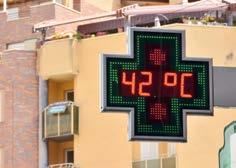
over half needed medical help, and 13% ended up in hospital. Muscle cramps, chronic illness
just yet - cannabis use among adults is holding steady at 12%, with daily users ticking slightly upwards at 2.5%, according to a report from the Ministry of Health. And while teens may be cutting back, the health system is still feeling the heat. Cannabis was linked to nearly half of all hospital emergency visits for drug issues last year and accounts for over a quarter of all drug treatment admissions - second only to cocaine. Worryingly, pot is getting stronger too. THC levels have shot up to 29% in hash and 12.6% in weed, pushing risks of mental health problems, heart trouble, and addiction. Plus, new ways to get high - think edibles and vaping - along with synthetic cannabinoids, are making it harder to keep track or stay safe.
flare-ups, and heat exhaustion topped the list of emergencies.
The study also highlights stark inequalities in staying cool: only 23% of homes are properly insulated, and while 55% have air conditioning, that drops to 47% in lower-income households.
A shocking 3% of homes have zero cooling options - rising to 11% in cooler parts of the country. Despite clear risks, a
big chunk of vulnerable people don’t see themselves as at risk, putting the spotlight on the urgent need for better public awareness campaigns.
Most people (57%) have accessed official heat advice, mainly on TV, official websites, and social media - and 90% find these warnings useful.
With extreme heat set to become the new normal, experts say the challenge now is getting people to recognise their own danger and pushing for better home cooling solutions - especially for those who can least afford it.
As one expert put it, “We know the heat is deadly - now we must help everyone stay safe, no matter their postcode or bank balance.”
PUBLIC health officials in Catalunya are pushing for a ban on smoking at beaches ahead of an upcoming nationwide tobacco control law.
Currently in its early stages, the proposed legislation would ban smoking on bar and restaurant terraces, university campuses, schoolyards and in work vehicles.
But the region’s public health secretary, Esteve Fernandez, is leading the charge to go further, arguing: “It should not be expected for a child to think it is normal to smoke on the beach as if it were similar to swimming or playing with a ball.”
Supporters of the proposed ban argue that prohibition is crucial to public health, reducing second-hand tobacco smoke exposure and environmental waste from toxic cigarette butts.
HEALTH bosses are preparing for a once-in-a-lifetime celestial spectacle – a trilogy of solar eclipses in just three years, with two of them being total blackouts of the sun. The first will hit on August 12, 2026, and the second on August 2, 2027. A third partial eclipse follows on January 26, 2028, ending its path right over the Iberian Peninsula. Spanish health officials are warning about the danger of eye damage. Looking directly at the sun – even during an eclipse – without special certified glasses can cause permanent blindness.


A campaigning, community newspaper, the Olive Press represents the huge expatriate community in Spain with an estimated readership, including the websites, of more than two million people a month.
THE Costa de la Luz, one of Spain’s last untouched coastal treasures, is facing a crisis on two fronts.
As Tarifa reels from devastating wildfires that have ravaged parts of the region’s protected parks, the town council has approved a massive development - 730 homes and 1,360 hotel beds - on pristine land next to the iconic Los Lances beach.
This isn’t progress; it’s pure greed. Despite 157 detailed objections from environmentalists, residents, and experts warning of devastating impacts on endangered birds, fragile dunes, wetlands, and the area’s vital flood protection, the council pushed ahead. The development threatens not only wildlife but the very soul of Tarifa - its raw natural beauty that draws visitors from around the world.
The present fires have exposed the region’s vulnerability, destroying vegetation that acts as a natural barrier against erosion and flooding. Building a sprawling resort in such a fragile ecosystem is reckless - compounding environmental damage and putting the local community at even greater risk.
Water shortages, overburdened infrastructure, and a housing crisis for locals are already pushing this small town to breaking point. Yet, the plan caters to wealthy outsiders seeking second homes and mass tourism hotels. The local community is ignored while the coastline is sacrificed for short-term profits.
Resurrecting an outdated 1990s plan, the council disregards modern environmental laws and public opinion. With big foreign investors reportedly involved, this move reeks of speculation, not sustainable growth.
Tarifa risks becoming another overdeveloped Costa del Sol, losing its unique character and green spaces forever. If we care about preserving Spain’s natural heritage and supporting local communities, we must stand with campaigners fighting this injustice.
Legal challenges and protests are vital. Our coasts aren’t playgrounds for developers - they are home, sanctuary, and heritage.
The message to Tarifa’s authorities is clear: Hands off our costas.
PUBLISHER / EDITOR
Jon Clarke, jon@theolivepress.es




Dilip Kuner dilip@theolivepress.es Walter Finch walter@theolivepress.es
Yzabelle Bostyn yzabelle@theolivepress.es
Samantha Mythen samantha@theolivepress.es
Tom Ewart Smith tom@theolivepress.es
ADMIN Victoria Humenyuk Makarova (+34) 951 154 841 admin@theolivepress.es
REVEALED: Where the Germans roll out the beach towel, the Brits get their fried breakfasts and the French have a lazy break. Adam Husicka presents the top Spanish holiday destinations by nationality
By Adam Husicka
Efor summer?

Thanks to a new interactive map by RTVE, we can now see exactly which Spanish towns and cities are the most popular with different nationalities, and what those choices say about each one.
From Brits tanning in the Costa Blanca to Germans taking over Mallorca, the overnight trends are as revealing as they are entertaining.
Here are the top destinations for each group, and what they might tell us about how we all holiday.
The Brits: Beach, booze, and a bit of Benidorm
No surprises here: British tourists continue their long-standing love affair with Spain's coastlines, and the numbers prove it. A whopping 73% of overnight stays in Benidorm are by Brits, and Calvia (home to Magaluf) tops the list with over 441,000 British holidaymakers seeking sun, sand, and sambuca shots. Four of the top ten destinations are in the Balear ics, four in the Canaries, with Barcelona and Alicante rounding it out. Flying out from the miserable grey skies, it’s clear that Brits want warmth, cheap beer, and the occasional tapas, preferably without straying too far from a fry-up.
The French: Catalan neigh bours and coastal charm
For the French it’s all about proximity and practicality, and that means Catalunya. Six of their top ten destina tions are in the region, with Barcelona reigning supreme at over 335,000 visitors. La Jonquera and Roses (both near the border) also pull big numbers, perfect for a quick

Alex Trelinski alex@theolivepress.es
Joshua Parfitt josh@theolivepress.es
Dylan Wagemans dylan@theolivepress.es
OFFICE MANAGER



Estefania Marquez (+34) 658 750 424 accounts@ theolivepress.es DISTRIBUTION ENQUIRIES (+34) 951 154 841 distribution@ theolivepress.es





SOUTHERN Spain’s scorching sun is taking a toll on its population’s health, leading to 6000 skin cancer diagnoses annually in Malaga alone.
Malaga - after Murcia - has the second highest mortality rate from melanoma, the most aggressive type and comprising around 10% of cases.
But most people don’t realise it is the most highly preventable form of cancer.
Skin cancer is a malignant disease caused by uncontrolled division and growth of the cells that invade healthy tissues

escape. They also show love to the Basque Country with Irun and San Sebastian, and Baztan in Navarra counts on 75% French tourists. If it’s close, has a beach, and maybe a decent boulangerie-adjacent cafe, the French are there.
The Germans: Mallorca is a second home
Mallorca isn't just a holiday, it’s practically a German state come summer. They descend on the island in droves, with Palma alone welcoming over 740,000 of them. Six of their top ten destinations are in the Balearics, and in many Mallorcan towns, Germans make up at least 40% of all tourists. They’ve also claimed a few sunny Canarian spots like Pajara and San Bartolome and of course, Barcelona and Madrid are on the list for culture seekers. But let’s be honest, if there’s a beachside beer, and a sun lounger to claim with a towel at 6am, the Germans are probably already there.
The Dutch: Cities, cycling, and secret valleys

and Valencia), but they’re just as likely to be found camping in a remote Catalan valley or hiking through Girona’s backroads. Sant Pere Pescador is their unofficial summer base, with nearly a third of tourists there coming from the Netherlands. Torroella de Montgrí is another Dutch-heavy hub, and their fondness for Palma, Malaga, and Gran Canaria shows a taste for sun, but never without structure. Basically, if it’s outdoorsy and bike-friendly, the Dutch are into it.
The Italians: Cities and a Balearic obsession
For Italians, Spain is either a city break or a Balearic escape with little in between. Barcelona tops their list with 250,000 visitors, followed by Madrid and Valencia. But over 40% of Italian summer travellers are heading straight for the islands, especially Formentera, where they make up a staggering 47% of all tourists. (It’s unclear exactly why, but scooters, clear seas, and a high number of Italian-owned businesses might have something to do with it.) Ibiza and Palma are also major Italian magnets, and even Arona and Adeje in the Canaries get plenty of Italian visitors. They're here for beaches, vibes, and style, naturally.

The Americans: City slickers abroad Americans don’t mess around with obscure destinations, they go where the guidebooks send them. Barcelona leads by a mile with 440,000 US visitors, followed by Madrid with 330,000. After that, it’s a steep drop to Valencia, Palma, and Sevilla, which all clock in around the 40,000 mark. It’s clear they’re here for the big cultural hits - flamenco in Sevilla, art in Madrid, and Gaudi in Barcelona. Rota, however, breaks the pattern. Thanks to the US naval base, over 46% of its tourists are American, likely family and friends visiting sailors, with a bonus of sun and sangria.
Make sure you follow the ABCDE rules of skin cancer avoidance, as rates soar in southern Spain with Murcia and Malaga coming top, writes Josie
By Josie Sharp

As climate change brings sunnier and hotter days, simple methods to lower the risk of developing the disease must be taken.
These include avoiding excessive exposure to the sun, and protecting vulnerable areas such as the nose and ears with suncream.
Avoiding the rays between 12pm and 5pm, wearing hats or sunglasses and applying suncream are key ways to protect yourself.
The good news is 50% of patients survive advanced melanoma.
● C for varied colours
● D for diameter if the moles are over 6mm, and
● E for elevation or evolution, to check the growth over time.
Unchecked melanoma can be life-threatening without proper treatment, and can dramatically reduce the quality of life of patients and can have a negative impact on their psychological health.
The outlook for the disease is not promising, with cases expected to increase by 40% by 2040. However, melanoma diagnoses in Spain have already surged by more than 50% in the past decade.
Over 90% of skin cancer cases
tion exposure, which regularly reaches levels of 10 during

Much of this is due to immunotherapy, a new breakthrough treatment, where drugs are injected into the body to stimulate cells to attack the growing tumours.
Despite this new therapy, many doctors stress that prevention and early detection is vital to surviving skin cancer.
Checking your skin regularly and spotting any potential signs of skin cancer that lead to an early diagnosis can increase the chances of survival to nearly 100%.
Dermatologists recommend people follow the ABCDE rule when self-checking their skin for lesions.
Here is your checklist:
● A for asymmetry
● B for abnormal borders
Make sure you are among the first to spot it… or better take the simple steps to avoid it in the first place.
Between 2019-2023, the number of skin cancer cases in Spain increased by 40%, affecting an average of 47 people in every 100,000 nationwide. Alarmingly, the Hospital Regional in Malaga recorded more than 180 cases last year.



PRIVILEGE: From polo to sailing, Sotogrande is in a different class to the Costa del

THERE is nowhere in Spain like Sotogrande in summertime.
The country’s most exclusive private enclave, this is the go-to destination for the discreetly wealthy and famous.
Even the privileged tourists who come to visit from Marbella or Ibiza, say, are surprised at the difference.
“The golf courses are excellent, the marina is safe and uncongested, there are no piles of traffic and people are generally nice,” explains local businessman Ben Bateman, who has spent his life in the resort.
“It has changed so much in Sotogrande over the last two decades and all for the good,” he continues. “Above all, there is so much more to do here now in terms of eating and going out and you don’t have to worry about your teenagers at night.”
He’s referring to a string of cool spots, including Agora, Trocadero and the After Polo where hundreds of youngsters gather through the warm summer evenings.
Yes, you read that correctly, ‘After Polo’... it’s where your youngsters will be rubbing shoulders with Middle Eastern princes, Made in Chelsea princesses and, of course, Argentinian polo professionals. What is there not to like?
With names like Domecq, Cartier and Oppenheimer in the mix, no wonder Sotogrande is the Mediterranean playground of the rich and famous, writes Dilip Kuner and Jon Clarke
With its unbeatable location and near-perfect weather, it’s no wonder this paradise is one of Spain’s most sought-after spots to live.
Lying just 100km west of Malaga, it offers a front-row seat to the ancient world’s ‘Pillars of Hercules’ – that’s the Rock of Gibraltar and Morocco’s Jebel Musa.
It’s where business moguls and A-listers head to relax and enjoy the fruits of their wealth. From yachts and private jets to golf and polo, everyone here seems to be living a lifestyle few could dream of.
But how did this once sleepy agricultural estate turn into a playground for the elite?
The mastermind behind the transformation was one Joseph McMicking, an American-Filipino business tycoon.
McMicking had already made his mark as president of the Ayala Corporation, where he brought the prestigious Forbes Park to life in the Philip-
pines.
Inspired by the success of his previous venture, he set his sights on replicating that exclusivity on the sunny Spanish coast and in 1962, sent his cousin, Alfredo ‘Fredy’ Melian, on a mission to find the perfect plot. Armed with little more than a motorbike and a sense of adventure, Melian scoured the region’s then rugged dirt roads.
His efforts paid off when he discovered a sprawling 1,800-hectare estate near Gibraltar.

The farmland had been owned by a succession of the rich and famous – the Duke of Arcos, the Larios gin family and Spain’s then-richest man, Juan March, an arms and tobacco dealer and founder of the eponymous science and arts institution.
It seemed fated for grander use – and it ticked the boxes.
“We bought the land at Sotogrande without having seen it, like a pig in a poke,” said McMicking. “Paid $750,000 down and had to pay another third in six months and the rest in a year.”

BMSOTOGRANDE, the trusted name in Sotogrande luxury property for over two decades, is renowned for its unrivalled local expertise, prominent shopfront location, and personalised client service. Specialising in prime real estate, the team connects discerning buyers with the very best homes and land in this worldclass destination. They are now showcasing an extraordinary opportunity in Sotogrande’s prestigious G-Zone – a prime 3,668 m² frontline golf plot with a full building licence already granted. In Sotogrande, securing a building licence can take 12–18 months, involving detailed architectural plans, strict compliance with local regulations, and multiple stages of municipal approval. For many buyers, this lengthy process is a major hurdle that delays their dream home.
This plot eliminates that wait entirely - construction can be-
BMSotogrande presents rare frontline golf plot – ready to build
gin immediately. That ‘readyto-build’ status not only saves precious time but also removes uncertainty, making it a rare and highly valuable find in the current market.
South-facing and elevated, the land enjoys sweeping views over the Almenara Golf Course, the protected Alcaidesa National Park, and the Mediterranean Sea. With approximately 1,100 m² of build potential, it’s an ideal canvas for a custom luxury residence designed to make the most of its stunning surroundings.

Tucked away at the end of a private road, it offers both privacy and quick access to Sotogrande’s finest amenities - championship golf, a vibrant marina, polo, international schools, and fine dining. In a competitive market where licensed, ready-to-build plots are exceptionally scarce, this property stands out as a golden opportunity for the discerning buyer. Contact BMSotogrande today to make this remarkable plot the foundation of your dream home.
From previous page
Enrique Zobel (the latter had been overseeing his pal, the Sultan of Brunei’s 1,788room palace) and Melian stayed on as ‘director of works’.
The Antigua Venta Toledo served as the first headquarters and, from there, the team somehow muddled along through.
Inspired by Palm Beach and Pebble Beach in the US, McMicking was determined to build the community around a golf club and, in



1963, he hired top course designer, Robert Trent Jones.
The Real Club Sotogrande was his first European venture and the first course in Europe with a new-fangled automated irrigation system.
Spain’s top modernist architect, Luis Gutierrez Soto (of Madrid’s famous Callao Theatre and the fnac building), designed the lowslung clubhouse, which is still very avant-garde today.
Next up the team hired the director of The Ritz hotel in Madrid to run the club.
And Trent Jones would return a decade later to design Valderrama, the setting for Volvo Masters events, the Spanish Open and even the Ryder Cup.
Ultimately it put the Costa del Sol (ED: technically just outside - it’s Cadiz) on the map as one of Europe’s top golfing destinations.
Meanwhile, keen polo player, Enrique Zobel
built a polo ground by the beach. La Playa, inaugurated in 1965, wasn’t Spain’s first (the Jerez Polo Club dates back to 1872), but it very much set the social tone. Today, the newer Santa Maria Polo Club is considered one of the best in the world.
The first beach club the Cucurucho (named after its conical-shaped cornet roof) still exists today, though it’s bigger and grander, and called Trocadero.
The first hotel, the modernist, luxury motel style Tennis Hotel, now the Hotel Encinar, emerged in 1965.
Word spread and the rich, powerful and discreet began moving in. Jaime Ortiz-Patiño of the Bolivian tin mining dynasty, diamond magnate Philip Oppenheimer and Javier Benjumea, the Marquis of Puebla de Cazalla, all became residents.
A series of French dukes, Belgian barons, scions of European business followed, and
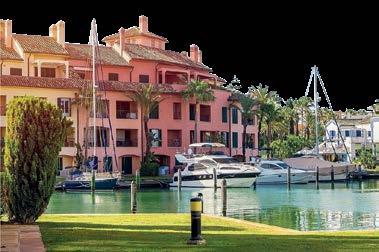
IT has certainly been anything but an easy market for property sales in Sotogrande this year.
The heavy rains in March and a ‘very late Easter’ delayed many potential buyers’ planned trips to view properties, explains one of the resort’s leading estate agents.
“But thankfully May picked up and June and July too,” Ben Bateman, boss of Holmes Sotogrande told the Olive Press.
“It also helped that the majority of unrealistically high listings from last year have now reduced in price this year.
“Many developers also launched new projects with more realistic price expectations, despite the sharp increase in costs of construction.,” explains the boss of the resort’s longest-running agency.
“Now as we get to the delivery phase there is some price flexibility particular- ly for buyers who have the funds in place and are prepared to act decisively.”
Problems began when the market ‘turned bullish’ to wards the end of 2023.
“It meant many vendors got over-exuberant and started to fly kites, after being per suaded by less experienced agents,” he continues.
“The issue was, when they even tually got realistic and started re ducing prices having not sold after nine months, it was like spilling blood.”
With the scent of blood in the air, the vultures, wolves and sharks started to circle.
“It meant the market in the second half of 2024 simply got over confi-
After a slow start to 2025, the property market in Sotogrande is picking up again, explains Ben Bateman of Holmes
dent.
“The sudden increase in pricing was too high and supply was short. There weren’t enough properties for sale,” he continued.
In addition, new developments were being priced too high and too many agents were going out ‘knocking on doors’ to canvas for listings.
“They were agreeing to whatever price the owners wanted and, if it doesn’t sell, who cares,” he quips. “It was great for their window dressing, but they simply weren’t selling.”
Fortunately, prices have now come down a little and there are more listings than a year ago. Holmes has 300 listings now, which was down

“Sellers are now being a little more realistic and this year has been strong for apartments and there has been a spike in demand for two-bedroom flats in partic-
“This is for people who want a holiday home again and they are still relatively good value at around €450,000 to
Americans, Eastern Europeans and Latin Americans
There is also a larger cross-section of buyers
moving into Sotogrande, which has an-all year population of about 6,000 people.
While the Spanish market is still strong, the British market has been coming back with the Labour party getting into power and taxes set to rise.
“There are also more


GREEN SPACE: Sotogrande is surrounded by protected coastal and mountain areas
Americans, post-Trump, and a high percentage of Eastern Europeans, particularly Czechs and Poles, and more Latin Americans, particularly those who have been resident around Europe for a while,” explains Bateman, a father-of-five, who started school in Sotogrande, before university in the UK.
He has also seen a steady drift of buyers from Marbella, as have other agents, who the Olive Press spoke to.
“The agents in Marbella used to say it was boring in Sotogrande, all dust devils and nothing going on, but things have really changed.
“Now there is so much more going on and
Sotogrande is a big pull. We have got so many agents now coming to us from Marbella with their clients.
“In particular it is the crowd who bought in their thirties in Marbella 30 years ago who are now coming to Sotogrande to buy in their sixties.
“Sotogrande is so much calmer and safer. You can let your kids out here and not worry about your teenagers,” he continues. “There are no traffic jams and much less crime.
“And since the commercial rents in the marina came down there are so many more shops and restaurants and that has created more footfall and a much busier, more buzzing place.”
San Roque golf course, but unless you are a houseguest you are unlikely to see the best of the rest.
American diplomat Nicholas Biddle’s house, built by Javier Carvajal fresh from designing the Spanish Pavilion at the New York 1963 World’s Fair, cost $160,000.
Sadly, prices have gone up: When Joseph Kanoui, head of the syndicate that bought Cartier, put his Casa La Manzana on the market for €26m in 2006, it was the most expensive house for sale in Spain.
McMicking’s plans for Sotogrande extended to the kind of person who came and what they built. “A Sotogrande based on money would be the most horrible society imaginable,” he said. However, it was only when Sotogrande was running out of cash and needed to open up to a new market of buyers that more affordable housing was developed.
Franco had helped the Sotogrande shareholders by waiving the rule that prevented foreigners purchasing land in Spain. But he stuffed them by closing Spain’s border with Gibraltar in 1969. With the N-340 under con-

struction, the trek to Malaga airport was arduous. The jet set couldn’t jet in, and Sotogrande fell into debt.
In the late 70s, the decision was taken to build apartments on the left bank of the Guardiaro. In 1978, to appeal to all-year residents, the International School at Sotogrande (ISS) was set up –initially in the old cattle sheds of one of the farms, Cortijo de Paniagua.
By the time the border reopened in 1985, Sotogrande was a different kind of place, still off the beaten track – it would be another 17 years until the AP-7 motorway hooked it up, but more connected to the real world. Some of the residents even had day jobs!

McMicking’s vision had always included a marina with canals and islands of apartments with yacht views, and the 1980s developments included just that, in shape of the Puerto Deportivo Sotogrande, completed in 1987, three years before his death.
The construction of this mini-Venice was
IT is time to dust off your jodhpurs and head over to the playing fields of Sotogrande as it hosts the prestigious Gold Cup from August 18 to 30.
This annual highlight of the World Polo Tour attracts thousands of spectators to the Ayala Polo Club. As part of the month-long International Polo Tournament – the 54th edition of the event – the Gold Cup showcases the crème de la crème of the sport. With three levels of competition – low, medium, and high handicap – there’s
as good as saying times might change, but the dream of Sotogrande as a beautiful playground, a gorgeous sanctuary, remains intact. As he predicted: “Sooner or later the Costa del Sol is going to be mobbed but Sotogrande will be an island of order in the chaos.” No truer could he have been.
something for every polo aficionado. The action is already in full swing, with the Bronze and Silver Cup events being contested, and is open to all comers to view.
Beyond the thrilling matches, there is a vibrant atmosphere with a variety of activities. You can explore the stylish boutiques, enjoy live music performances, or unwind at the lively ‘After Polo’ tent. Families are well catered for with a dedicated children’s area featuring many exciting attractions. And when hunger strikes, there is no shortage of delicious morsels to tempt you.

WHEN I made my first visit to Sotogrande many, many moons ago in March, Sotogrande was completely empty and the only place open for dinner was Hostal Bernardo where you will now find CaixaBank in Pueblo Nuevo.
Driving back to my hotel in Estepona I saw literally no other restaurants open and Puerto Duquesa, for example, didn’t even exist. However, how things have changed now Sotogrande has become a year-round destination.
Despite the fake news merchants who claim there are few places to eat, it couldn’t be further from the truth.
I have just jotted down the names of 50 restaurants within a ten minute drive of my office and I’ve eaten in all of them – except one, the brand new Plaza Blanca, which is meant to be great. I asked my team to pick their two favourite restaurants, with me going first, choosing La Verandah and Fresco. There is nostalgia for me at La Verandah as its owners, Jose and Carlos, worked with me when I was General Manager of Valderrama in the late 1990s. But their restaurant has real consisten-

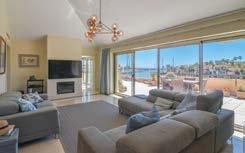
The Olive Press asked long-established local businessman James Stewart of Savills on his Sotogrande foodie pics
cy providing magnificent Spanish food with a touch of French influence.
Fresco has a great variety of choice and Guillermo, the Head Chef, is an award winner. I often have lunch there on Sundays on the terrace before dipping inside to watch a sporting event.
Rita, meanwhile, loves El Trocadero (for the ‘location particularly on a sunny day in winter’) and Brosco in Pueblo Nuevo where the sushi is the ‘best in town’.
Siobhean likes the newly opened Hincha which has ‘real quality food’ as well as the Argentinian grill, La Reunion, which has a great informal atmosphere.
Gloria’s picks are Rio Seco serving excellent fresh fish and classic Andalusian fare and Cancha I which overlooks the San Enrique polo fields. “I love the quiet country location and the steaks are always perfect,” she says.



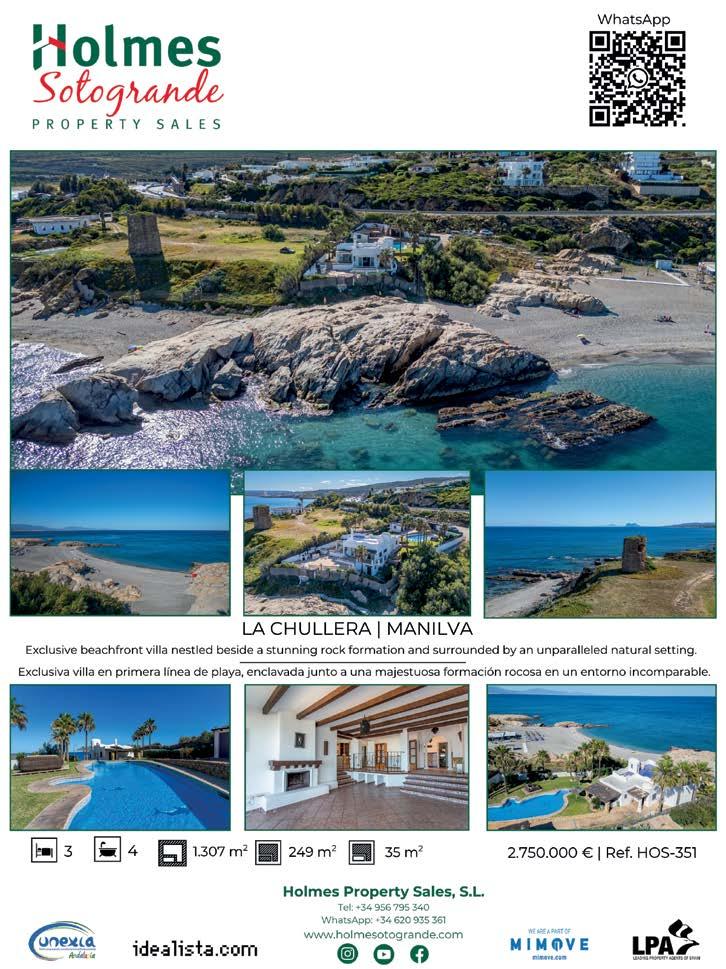
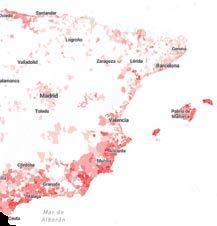
MAPPED: Red shows spots favoured by the British, while clockwise, from top left, where the Americans, French, Germans and Dutch head for



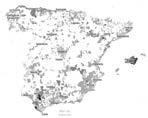
EXPLAINED: Spain’s fake CV scandal - why politicians keep getting away with lying about their credentials office regardless of their academic background.
By Adam Husicka

AN alarming trio of politicians have stepped down in recent weeks after it was found they had lied or exaggerated details in their biographies, while several others have quickly moved to edit their public profiles.
What began with one high-profile resignation has now turned into a political headache affecting multiple parties, and raising tough questions about trans parency and accountability.
The most recent controversy has tarnished the career of Noelia Nuñez (right), a rising figure in the PP party, who resigned after inconsistencies were found in three different versions of her CV. Extraordinarily, it emerged she had claimed to hold a joint degree in Law and Public Administration, as well as a degree in English Philology. In reality, she had not completed any of these studies.
While this protects democracy, it also has a fundamental flaw: there is no official way of verifying the truthfulness of CVs submitted by politicians.
While they are typically asked to sign a sworn statement, there's no real system in place that can confirm their cre-

At the national level, MPs in Congress are not even required to use a

standard format to present their education or career history.
Some list their full academic journey, others simply write ‘Law degree’ with no more detail.
For senior government positions, such as ministers and top civil servants, there are stricter rules: The Office of Conflicts of Interest can demand official documents to back up CVs, but this only applies to appointments made by the Council of Ministers. It does not extend to most elected officials.
This was quickly followed by two more resignations: Jose Maria Angel (below right), a veteran Socialist (PSOE) in Valencia, and Ignacio Higuero, a former Vox member who was high up in Extremaduran pol itics.
Both were found to have made up qualifications in their official profiles.
Yet as scrutiny intensified, it became clear these were not isolated cases. In fact, a growing list of politicians have now edited their CVs to remove unverified or non-official qualifica tions, sometimes years later.

Under Spanish law, anyone can run for elected
On the surface, lying about a degree may seem like a minor offense, especially when politicians are not legally required to hold one.
But falsifying credentials can have serious implications, especially when they help access public roles, influence voters, or gain legitimacy as an elected representative.
In Jose Maria Angel’s case, the Valencian Anti-Fraud Agency concluded that a forged university certificate may have helped him advance as a career civil servant.
The scandals have also exposed a deep lack of transparency.
While most of the exposed cases have involved the PP, the issue is by no means limited to a single side of the political spectrum.
The PSOE has accepted Angel’s resignation but accused the Valencian regional government of politically weaponising the Anti-Fraud Agency.
Meanwhile, Vox has mostly remained silent as former members like Higuero distance themselves from the party.
Meanwhile, there are still no real consequences for officials caught lying on their CVs, no official investigations unless criminal fraud is suspected, no fines, and often, no resignations.

The case is now under investigation by Spain’s Anticorruption Prosecutor’s Office.


AT the Olive Press, we pride ourselves on reporting the truth – warts and all. But lately, Google has been quietly wiping our stories off its search results.
We’re talking about SEVERAL ARTICLES A DAY being de-listed for what the global search giant dubs ‘inappropriate content’.
What’s inappropriate? According to them, it can be hard-hitting reports on domestic abuse or child abuse, violent crime – or, unbelievably, a light-hearted feature like ‘The Law’s an Ass: 12
Bonkers Laws in Spain’
Yes, you read that correctly: Google apparently does not know the age-old phrase!
Often we appeal and win, albeit the stories are not reappearing until the following day at the earliest. But many of the most harmless stories vanish for good, without explanation. This alarming wave of censorship coincides with Google’s shiny new AI model – but it’s not telling us why.
The result? A chilling effect on free speech. Important stories, the kind you have a right - and need - to read, are being quietly buried. But here’s the good news – delisted doesn’t mean deleted. The stories are still there on our website and we’re making sure you never miss them.
That’s why we’re expanding all our daily newsletter offerings to all our registered subscribers. Direct to your inbox, no Google middleman, no silent censorship.
If you want the news Google won’t show you, sub scribe today.
Just take a pic of the QR code below or visit www.theo livepress.es
MIDSUMMER MADNESS
None of this is new.
Spain’s first high-profile fake CV case dates back to the 1980s, when Luis Roldan (left), then head of the Guardia Civil and a PSOE member, claimed to hold several degrees and a master’s.
He hadn’t even finished high school.
Later convicted for embezzlement, Roldan symbolised an era of corruption, but also set an early precedent for the misuse of academic titles in politics.
Some 40 years later, the system remains vulnerable, as in 2018 when scandal broke about the former president of the Community of Madrid, Cristina Cifuentes (PP).
She was accused of fraudulently obtaining her master’s degree, not having attended a single class at the King Juan Carlos University of Madrid, and the certificate she showed was found to have forged signatures. She resigned the following month.
Until resume checks become mandatory, and transparency laws are properly enforced, politicians will continue to exaggerate their achievements with little fear of consequence.
As the summer heat drags on, so does the scandal. There’s no way to tell if real change will be made, or if Spanish politics will simply fade back into the familiar haze of smoke, mirrors, and political ambiguity.
OR alternatively take advantage of our sizzling hot midsummer sale, which from this weekend will give anyone interested exclusive, unfettered access to the Olive Press website 24/7 for the whole entire year, for 50% OFF!

Yes, FOR JUST 25 EUROS, you will be able to visit Spain’s leading English news website, almost completely ad-free and for the whole year.
That’s under 50 CENTS a week!
You won’t get a cana or a coffee for that anywhere in the country these days for that price. Sign up today and look out for the special offer and its code this weekend.


SPAIN has approved plans to extend paid parental leave to 17 weeks for each parent, up from 16, with single parents entitled to 32 weeks.
The change, backed by PM Pedro Sanchez
to appease junior coalition partner Sumar, aims to meet EU work-life balance rules.
Spain was fined €9,000 daily for non-compliance, rising to €43,000 daily this month, costing over €10m so far. The €1.5bn bill will be covered by the state. Spain is one of just two EU countries, alongside Finland, to offer equal paid leave for both parents.
THE Spanish videogame industry is facing a brutal reality as studios slash jobs in what many say is the first big wave of the Artificial Intelligence takeover.
Madrid-based videogame studios Secret 6 and Aheartfulofgames, laid off 42 and 28 employees, respectively at the start of the month.
In Barcelona, workers at King, the multimillion dollar company behind Candy Crush, protested last week following a 50-person layoff. The employees claim that they helped the company create an AI tool to create new levels of the games, which is now replacing them.
Globally, several thousand employees within the videogame industry have been laid off in 2025 alone, despite the fact that the industry is valued at about €240 billion.
Microsoft announced its fourth round of layoffs this year, letting go of 9000 employees.
The company’s CEO, Sa-
ing toward the future.
By Maia Pak
tya Nadella, stated that the company is ‘thriving,’ and that Microsoft’s ‘overall headcount is relatively unchanged, and some of the talent and expertise in our industry and at Microsoft is being recognised and rewarded at levels
never seen before.’
Additionally, Nadella stated that ‘AI transformation’ will be one of Microsoft’s top priorities, look-

“Consider how organisations, empowered with AI, could unlock entirely new levels of agility and innovation by transforming decision-making, streamlining operations, and enabling every team to achieve more together than ever before,” Nadella added.
SPAIN’S unemployment fell slightly in July, with 1,357 fewer people out of work, bringing the total to 2.4 million - the lowest figure for this month since 2007. It marks the sixth consecutive monthly drop in jobless numbers, though
SPAIN’S favourite secondhand marketplace, Wallapop, has been fully acquired by South Korean internet giant Naver in a deal worth over €400 million.
Founded in Barcelona in 2013, Wallapop has grown into a secondhand powerhouse with 19 million monthly active users, offering everything from vintage Levi’s to motorbikes via hyperlocal buying and selling.
Global Naver, which already owned 30% of the app, is expanding its global resale empire, having previously snapped up US fashion platform Poshmark and Japan’s Soda. Wallapop will continue operating in Spain, Italy and Portugal, but with Naver’s technology and investment, it’s expected to roll out new features and broaden its reach.
it’s also the smallest July decrease since 2002, according to data from Spain’s public employment service (SEPE). Meanwhile, job creation continued at a modest pace. Social Security registrations rose by 4,408, pushing the total number of workers paying into the system to a record high of 21.9 million.
WE’VE all heard of stocks and bonds, and most of us have a basic understanding of what they are. Stocks represent ownership in a company, while bonds are essentially loans to a company or a government.
It’s widely recognised that it’s wise to hold both in your investment portfolio. Why? Because putting all your financial eggs in one basket is rarely a good idea – diversification helps manage risk.
Even better, stocks and bonds are often negatively correlated. When stock markets dip, investors tend to seek the relative safety of bonds – which pushes up bond prices. By holding both, you can reduce volatility, aim for the same returns with less risk, and avoid emotional investing pitfalls like panic selling. But how much of each should you hold? That’s where opinions differ.
The big question in investing –known as the asset allocation decision – has many answers. Strategies include:
● Time horizon-based: The longer you have until retirement or needing the money, the more stocks you can hold. Shorter time frames favour bonds or cash.
● Goal-based investing: Allocate different stock/bond mixes to different goals. For example, a child’s university fund might be 50/50, while a short-term house deposit could lean 20/80.
● Target-date funds: These adjust your portfolio based on when you plan to retire, gradually shifting from stocks to bonds over time.
● Age-based: A classic rule says subtract your age from 100 (or 120) to determine the percentage to hold in stocks, with the rest in bonds.
At BISSAN Wealth Management, where I work, we take a goalbased approach. First, we learn about your financial objectives – retirement, children’s education, a property purchase – and then quantify these using our optimisation model. We calculate expected future cash needs and place those funds in bonds to shield them from market swings. The remaining capital is then invested in stocks.
You might say: “Goal-based investing has arrived in Spain.”
But there’s another wrinkle – your mortgage.
If you still owe on your home, your asset mix might not be as balanced as you think. A mortgage is essentially a


bond in reverse – instead of receiving interest, you’re paying it. Let’s say you own €200,000 in bonds and €200,000 in stocks. On paper, that looks balanced. But if you owe €150,000 on your mortgage, then the interest from a large chunk of your bonds is simply going to cover that debt. Your net bond position is only €50,000 – meaning you’re more
heavily invested in stocks than you might realise. Some may take this as a sign to buy a cheaper home in Spain and avoid a mortgage altogether. My view? Find a trusted financial advisor in Spain who can help guide you through these decisions, so
you don’t have to navigate it all alone. Same facts. Smarter conclusions.


BARCELONA’S Sagrada Familia has officially become the city’s tallest building, reaching 155.58 metres, surpass-

November 29thDecember 12th 2023
LOOKING FOR MORE CULTURE STORIES?
ing the Torre Mapfre and Hotel Arts (154m).
Construction, which began in 1882, is nearing completion, with the final spire set to reach 172.5m by 2026. Gaudi de-
signed the basilica to stay below Montjuic hill (177.72m), respecting nature’s dominance over human creations. Spain’s tallest buildings are in Madrid’s Cuatro Torres Business Area, ranging from 230 to 249m. The Sagrada Familia will be the ninth tallest building in Spain once completed.
ARCHAEOLOGISTS say they may have found the remains of what would be one of Spain’s oldest synagogues, dating back to the late Roman era.
The discovery of fragments from oil lamps dated to the late fourth or early fifth century AD have led experts to reevaluate the remains of what until now was thought to be an early Christian church in the Ibero-Roman site of Castulo, near Linares, Andalucia. Most syn agogues that have been discovered in Spain are from the Medieval period. The fragments are decorated with menorahs, and the lid of a cone-shaped jar is believed to contain Hebrew scripture. Experts remain divided on whether the engraving says, ‘light of forgiveness’ or ‘Song to Da-
By Josie Sharp vid.’
Despite these ongoing debates, the existence of the pieces indicate the presence of a previously unknown Jewish community.

Bautista Ceprian, one of the archaeologists working on a Junta de Andalucia project, that aims to uncover Jewish history, believes the building is where the community came to worship.
Ceprian said: “When we looked at the interior of the building a little more closely, there were some strange things for a church; there was


something that could have been the hole for a big menorah.”
He argues that the lack of typical Christian materials such as burial sites or religious relics, suggests the building was not a church but a Jewish temple, with architectural features resembling synagogues found in Palestine.
“Synagogues

RENDER: A computer simulation of how the walls once looked
of that time could be more square in shape than Christian basilicas because in Jewish worship, there’s usually a central bimah [raised platform], which people sit around,” says Ceprian.
Across
1 Way, way off (4)
4 How things usually are (3,4)
9 Construction
Majestic (5) 24 Kitchen surface (7)
Unjust (3,4)
Gun’s recoil (4)
2 Ready to go (5,2) 3 Barn dance (4) 4 Prepared a salad (6) 5 Shares (8)
Ancient (5)
Researchers believe the Castulo synagogue may be among the oldest jewish temples ever discovered on the Iberian Peninsula, with most surviving synagogues in Spain dating to the medieval period.

ARCHAEOLOGISTS have unearthed evidence of cannibalism in El Mirador cave, northern Spain, offering a grisly glimpse into Neolithic
Published in Scientific Reports, the study shows that a group of humans may have eaten their enemies in an act of social control and dominance, not for survival.
The remains of 11 adults, adolescents, and children dating back around 5,700 years were found in the cave.
The bones show clear signs of posthumous butchery including cut marks, tooth impressions, and signs of cremation, suggesting the victims were processed and consumed after death.
“This was likely wartime cannibalism, where one group attacked and ate members of another to assert dominance,” said Francesc Marginedas, a co-author of the study.
The discovery is linked to a major shift in the region’s way of life. The site, once used to house livestock but
DIG: Archaeologists at work and a bone they discovered showing cut marks
then be came a collective burial place.
“This episode signals the end of its role as a herding site and marks a deeper connection between life, death, and ritual,” said Antonio Rodríguez-Hidalgo, another researcher.

Analysis of over 650 bone fragments revealed that the remains were local to the area. There were no signs of famine, ruling out survival cannibalism, and no evidence of ritualistic burial practices. This discovery adds to earlier findings of Bronze Age cannibalism at El Mirador, indicating that such practices continued for centuries.
“Cannibalism might have been more widespread in prehistoric times than we previously thought,” Marginedas concluded.

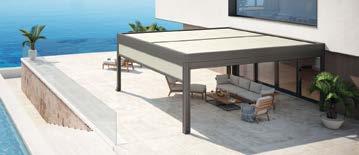

All solutions are on page 15

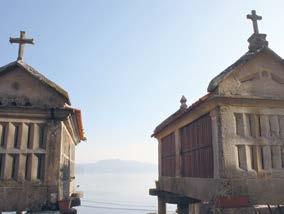
WHAT comes to mind when you think of Spain? For many an image of people baking under the Spanish sun on a costa beach comes to mind. And when their attention turns elsewhere it tends to be towards day trip honeypots like Gaudi’s surreal


Sagrada Familia in Barcelona or the majestic Alhambra in Granada.
But venture just a little off the beaten path and you’ll find a treasure trove of jaw-dropping sights that most tourists miss.
From dramatic gorges and cliff-hugging villages to ancient Roman theatres and mystical medieval walls, the Olive Press brings you 12 dazzling cultural wonders that deserve a spot on your summer travel list. You’ll skip the crowds, dodge the cliches - and come home with better travel stories than anyone else.
Stone granaries by the sea in one of Galicia’s most charming villages
Combarro is one of those postcard-perfect villages that seems designed for Instagram , but it’s also packed with


By Dilip Kuner

history. Lining the waterfront are horreos – traditional Galician granaries on stilts – which have been used for centuries to keep grain dry and rodent-free.
Wander cobbled streets lined with flower-draped balconies, tuck into fresh seafood with views of the Ria de Pontevedra, and soak up the slow pace of village life.
An ancient stage buried for centuries – now back in the spotlight
At first glance, Cartagena might look like just another modern Spanish city. But hidden behind the buildings lies a jaw-dropping secret – a vast Roman theatre that once seated 6,000 spectators. Built around the time of Caesar Augustus, the theatre was lost under layers of urban life until the late 20th century. Today, you can walk through history itself as you explore the excavated ruins, with Roman baths and forums nearby. And yes –the theatre still hosts summer performances!
PLAZA DEL TORICO, Teruel
A tiny bronze bull, fibre-optic stars and one of Spain’s coolest squares
Teruel might not be on every tourist’s radar, but its central square is nothing short of magical. At the heart of this elegant space stands a teeny bronze bull — the much-loved ‘Torico’. Surrounding it? Sleek lighting, modernist buildings and pavements that sparkle at night thanks to embedded fibre optics that mimic the night sky. The square was reimagined in 2007 by star architects b720 — and it’s the perfect base to explore Teruel’s Mudejar architecture, a UNES CO-listed stunner.

A real-life Game of Thrones moment – with dragons!
In the Spanish enclave of Ceuta (just across the Med from mainland Spain), you’ll find one of the most eye-catching buildings you’ve probably never heard of.
The Casa de los Dragones – literally, House of the Dragons – is crowned with four fierce-winged beasts peering out over the city.
Originally built in 1905 and restored in 2006, this fairytale landmark is the crown jewel of the Plaza de los Reyes, and the perfect starting point for exploring Ceuta’s unique Spanish-Moroccan blend.
A Martian landscape… shaped by Roman greed
Imagine rust-red peaks and jagged hills –this is Las Medulas (right), a bizarre and beauti ful landscape carved out by the Romans in their hunt for gold.
Using a method called ruina montium, they blasted whole mountains apart with water pressure. The result? An other worldly terrain now protected as a UNE SCO site.
Hike through the tunnels, explore the caves, and head to the Orellan viewpoint for a jaw-dropping panorama.

Surreal, strange and utterly spectacular – just like the artist himself
If Salvador Dali designed a museum, you’d expect something bizarre – and the one he created in his hometown of Figueres does not disappoint. There




November 29thDecember 12th 2023
LOOKING FOR MORE TRAVEL STORIES?
Scan to visit our website
are giant eggs on the roof, golden mannequins on the walls and rooms filled with paintings, sculptures, holograms and mind-bending installations. Dali himself is buried here, beneath the stage of the old theatre.
It’s not just a museum – it’s a full-blown sensory trip through the brain of a genius.
Towering cliffs, secret monasteries and a river cruise you’ll never forget

Head deep into Galicia’s little known Ribeira Sacra region and you will discover the Sil Canyon that could be a greener little sister to the USA’s immense Grand Canyon.
The Sil River has carved a stunning gorge through granite cliffs that soar over 500 metres high — perfect for nature lovers, hikers, and anyone in search of a ‘wow’ moment.
Glide along the river by boat or tackle the trails on foot — either way, the views are next-level. Bonus points: you’ll also find ancient Romanesque monasteries, lush vineyards and a freak microclimate that lets Mediterranean plants thrive in this Atlantic corner of Spain.
Castilla-La Mancha
Cliffhangers – literally!
The Casas Colgadas (Hanging Houses) of Cuenca cling to the edge of a gorge in a sight that’s as nerve-jangling as it is beautiful.
These medieval homes appear to defy gravity, teetering over the sheer drop of the Huecar River gorge. One now houses the Museum of Spanish Abstract Art. It is perfect for art lovers with a head for heights.
The old town itself is a UNESCO World Heritage Site, full of winding alleyways and hidden courtyards.
WALLS OF AVILA, Castilla y León
Europe’s best-preserved medieval walls – lit up like a fairytale
Stretching 2.5 kilometres and dotted with 88 watchtowers, the 11th-century walls of Avila are straight out of a fantasy film.
You can walk along large sections and enjoy sweeping views over the terracotta-tiled old town and out to the Sierra de Gredos mountains. By night, the floodlit walls glow golden, creating one of Spain’s most magical vistas. Inside the walls: convents, cobbled streets and the birthplace of the mystical Saint Teresa.
You’ve seen the bridge – now explore what’s underneath OK, so Ronda’s Puente Nuevo isn’t exactly a secret – but most tourists
stop at the top and miss the magic below. Take the path into El Tajo gorge and you’ll get a whole new view of this epic 18th-century bridge towering 120 metres above. Along the way, you’ll pass ancient Moorish mills, Arab baths, and soaring limestone cliffs where eagles circle overhead. It’s nature, history and drama in one unforgettable hike.
A fairytale village high above a river canyon
If Cuenca’s cliff houses wowed you, wait until you see Alquezar. Perched above the Vero River, this medieval village is a tangle of cobbled lanes, stone houses and a fortified church that once served as a Moorish fortress. It’s also a hub for adventure – the

surrounding Sierra de Guara is a dream for walkers and canyoners.
Add in a glass of local Somontano wine at sunset and you’ve got the perfect day.
Where the ceiling is literally a cliff Setenil is one of Andalucia’s most surreal villages — where the houses
aren’t so much built on rock foundations but inside them.
Built into natural overhangs of a steep gorge, streets like Calle Cuevas del Sol are shaded by actual slabs of rock. It’s a genius bit of natural air con in the sizzling heat. Once part of the Nazari Kingdom, today Setenil is all tapas bars tucked into caves, sleepy cats on stone steps, and that unforgettable mix of geological quirk and rustic charm.

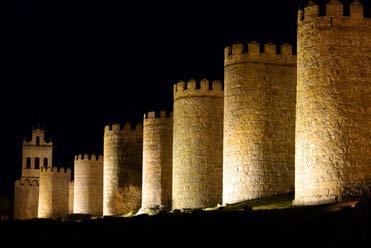
Across: 1 Academe, 5 Vial, 7 Red Cross, 8 Uh-oh, 9 Malawi, 10 Extend, 11 Car, 12 Eric, 14 Gist, 15 OKs, 17 Aprons, 19 Purest, 21 Want, 22 Air raids, 23 Bean, 24 Descent.
Down: 1 Arena, 2 Archaic, 3 Exotic, 4 Easter, 5 Vault, 6 Abounds, 13 Replace, 14 Germane, 15 Oswald, 16 Sports, 18 Often, 20 Sadat.





EIGHT ex-communicated nuns are refusing to leave their 15th-century Santa Clara convent in Belorado, saying the Vatican has blocked their attempt to sell the convent to fund another property purchase.
FORECASTERS say this weekend could produce this year’s highest temperatures in the Valencia region and possibly set new modern-day records.
THREE Malaga police officers have been suspended after filming an ill man defecating roadside and sharing the video, causing him severe anxiety.

VIRGIN: Before (above) and after the ‘restoration’

By Dilip Kuner
DEVOTEES of one of Spain’s most revered religious icons, the Virgen de la Esperanza Macarena, have voted to approve a full restoration after a ‘botched’ cosmetic tweak ignited fury among worshippers.
In a dramatic meeting stretch ing past 4am, more than 1,800 members of the Hermandad de la Macarena – the powerful brotherhood guarding the statue – turned out to decide the Virgin’s fate.
Long queues formed outside the Basilica de la Macarena well before the 9pm start. When the marathon session ended, 998 had voted in favour of expert Pedro Manzano leading the restoration, following a previous controversial attempt by the Arquillo brothers that left the
statue with ‘unwanted aesthetic alterations’ to her face.
A further 458 opposed the move, with 13 abstaining. The vote came after the Andalucian Institute of Historical Heritage (IAPH) presented a damning report confirming its serious concerns about the statue’s condition.

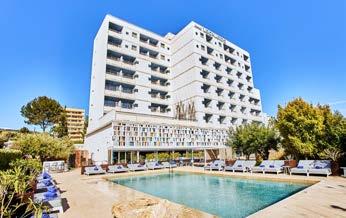

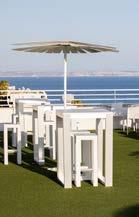
Brotherhood President Jose Antonio Fernandez Cabrero issued an emotional apology, admitting the earlier intervention caused ‘spiritual and
devotional damage’.
The scandal erupted after the Virgin’s brief public return on June 21, when worshippers noticed an altered, unsettling expression caused by ‘replaced eyelashes.’ Protests followed, forcing emergency measures and the resignation of Deputy Brother Davila Miura.
Now, with Manzano at the helm, the restoration is expected to take three months.
LUXURY Spanish fashion house Balenciaga has unveiled an €895 tote that looks exactly like the kind of plastic bag you’d get at a supermarket. Crinkles? Check. Basic blue? Check. Eye-watering price tag?
BARCELONA football sensation Lamine Yamal has gone from superhero to pantomime star after a cheeky street art prank turned his mural into a scene straight out of Snow White – complete with seven dwarfs.
The 18-year-old wonderkid had found himself in hot water after he celebrated his birthday with dwarfs and scantily-clad women brought in for ‘entertainment’.
To mark his milestone birthday, a huge mural of Yamal dressed as Superman was painted in Plaza Joanic by famed urban artist TV Boy. But just days later, anonymous vandals decided to give the piece a not-so-subtle upgrade – stencilling the Seven Dwarfs around the star, in what looked like a savage dig at his questionable party planning.
Absolutely. While it’s made from super-strong fibres and folds into a pouch, unimpressed shoppers weren’t having it.
“A plastic bag that resembles a plastic bag,” one snarked. Another simply said: “I hate it.” Still, if you’ve a love of irony, and the cash to burn… the Marche tote might just be your next ‘bargain’.


Discover Leonardo Boutique Hotel Mallorca Port Portals - Adults Only, a 4-star superior hotel located right next to one of the most luxurious marinas of the Mediterranean: Port Portals.
Choose from one of our 77 unique rooms, all of them with great amenities and spectacular views, and enjoy a cocktail in the hotel’s Sky Bar or cool down on a Balinese bed by the pool. Come join us!